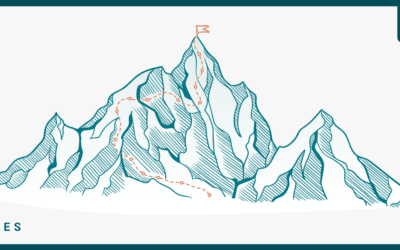When you hear zero-to-one in the context of product development, it’s critical to understand exactly what we’re talking about. We can think about it as:
Zero-to-one represents the phase of a product’s existence between the idea and the first shippable version, known as the minimum viable product or MVP.
However, even this description begs for more clarity.
Minimum Viable Products
Despite being a commonly-used and widely-accepted product stage, an MVP is defined differently depending on the product, the team building the product, and the resources available to those teams. At AppThink, an MVP is the smallest unit of value you can deliver to a customer in exchange for another unit of value, preferably cash.
An idea, on the other hand, has a much broader definition. Ideas can range from the earliest inklings of your future product to a well-defined Product Requirements Document, complete with market research and discovery data.
Before the MVP, all you have is an idea. And, as the saying goes, ideas are cheap.
During the course of developing the MVP of your product idea, you’ll inevitably encounter concepts such as:
- Prototypes: Fake, throw-away versions of your product that allow you to test your idea with real users.
- Discovery: The process of engaging with prospective users in order to better understand their needs, pain points, and desires.
All of this takes place between the time you have your idea (Zero) and the moment you deliver your MVP (One).
High-Level Overview
My goal here is to sketch out in broad strokes the obstacles you’ll face as you get started with your product and perhaps point you in the right direction.
All product work—software or otherwise—is fraught with risk and zero-to-one products are uniquely fragile and susceptible to these risks.
Key Takeaways
As you’re getting started on your product journey remember these key things:
- Know what risks, broadly speaking, exist, actively seek them out, and make a plan to mitigate them. Remember the big three are:
- Market risk
- Usability risk
- Resource risk
- Think like a scientist and do your best to avoid cognitive biases that can trick you into following the wrong path.
- Talk with your prospective customers often to gain a deeper understanding of the opportunities that are waiting to be addressed.
- Test your product with real users quickly and cheaply with prototyping.
- Iterate based on feedback from your prototype demos to get closer and closer to building something truly valuable for your users.
- Preserve your cash by finding organic ways to engage your customers and build a list of early adopters.
- Build community by engaging them where they hang out online like forums and Facebook groups.
- On your website and landing pages, give away valuable information and training in exchange for an email address
- Promote yourself to podcasts and their audiences.
- Write consistently and build authority with your users.
- Remember that doing manual, time-consuming things now will set you up for transitioning to automated, sustainable activities later.
Wrapping Up
Building a new product from the ground up is exciting, challenging, and sometimes harrowing work.
At its best, however, it’s an empathetic endeavor, not simply a commercial one. Finding ways to add value to people’s lives and to help solve big problems for them is a noble pursuit. Like any business, though, you have to be smart, scrappy, and willing to do what it takes to find your way to product-market fit.
I hope this post can give you a head start on anticipating the challenges to come and overcoming them to bring something truly remarkable to life via your product. If you want to hear more from the AppThink team you can sign up for our weekly newsletter here. Or, if you’re ready to take the next step with your idea, join the waitlist to be notified about registration for the next Foundations cohort.



